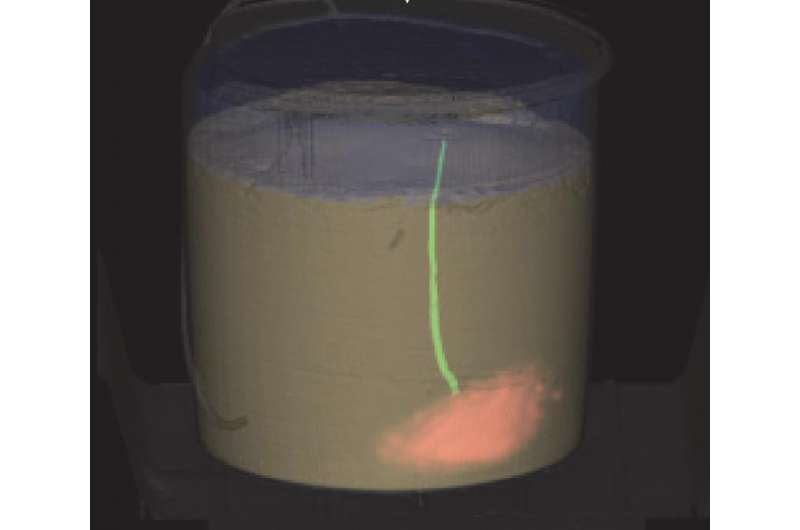Seeing the unseen: PET/CT scans reveal worms' hidden life

What are lugworms and other small animals doing in the seabed? Until now scientists have not been able to study these animals without disturbing them, but thanks to modern PET/CT scans, now we can study their hidden life.
The seabed is inhabited by vast numbers of small animals with hidden lives in the sandy sediments. Here they play an important role in keeping the oceans healthy. But how these animals behave and interact with each other is unclear, as it is not possible to see them without disturbing the sediment.
Researchers like Ph.D. Matthieu Delefosse would enjoy putting on a pair of X-ray glasses and study the sediment living animals without disturbing them.
"We know bits and pieces of what these animals do through different measurements/experiments, but we do not have an integrated method that allows us to measure these bits and pieces in the same time in a natural environment", he explains.
This inspired him to use a PET/CT scanner in his studies of benthic life. The results of this effort are published in the journal PLOS ONE.
Matthieu Delefosse was at Department of Biology, University of Southern Denmark, when he performed his benthic studies. Today he works as an environmental advisor for Maersk Oil and Gas.
"Our study has shown that it is possible to take a look into the natural life of benthic animals by scanning them in a relatively undisturbed environment. It could be interesting to use this technique to verify and develop further ecological models to scan real life samples with natural assemblages of animals and see what the scanner reveals: Which animals live in the area? And how do they behave and impact their surroundings?", he says.
To test his idea Matthieu Delefosse filled 10 liter buckets with sediment from Bregnør Bight in Odense Fjord, Denmark. The buckets were left for 8-10 days, so their content of sediment could compact and lugworms (Arenicola marina) establish themselves. Five buckets were scanned, and Delefosse observed how their varying contents of lugworms behaved.
One bucket contained one worm that burrowed through the sand, pushing water in front of itself, so that the water eventually saturated the sand in the bottom of the bucket.
"Another bucket had more worms, and we could see how three of them buried while a fourth stayed on the surface."
According to Matthieu Delefosse it is important to understand the behavior and activities of benthic animals.
"Their activities have a significant impact on the health of marine systems. Take lugworms - they bury in the sediments in search of microalgae to eat. Like other animals, they need oxygen and get it from the surrounding water, pumping it down into their burrows. This transports oxygen into the sediments", he explains.
The PET/CT scannings of lugworms were made possible by Professor Poul Flemming Høilund-Carlsen, Nuclear Medicine Department at Odense University Hospital.
"This interdisciplinary collaboration is an excellent example of how researchers from different fields and specialties should meet and try to solve tasks that can only be solved by interdisciplinary collaboration. Here we have large hospital scanners, a cyclotron and radiochemical laboratories that are normally used to help patients. Even though they work both days, evenings and on Saturdays there are still many hours where the equipment is not in use and can be used by researchers from other fields. Using the equipment for interdisciplinary research in these hours can lead to very interesting scientific results", says Poul Flemming Høilund-Carlsen.
Journal information: PLoS ONE
Provided by University of Southern Denmark





















